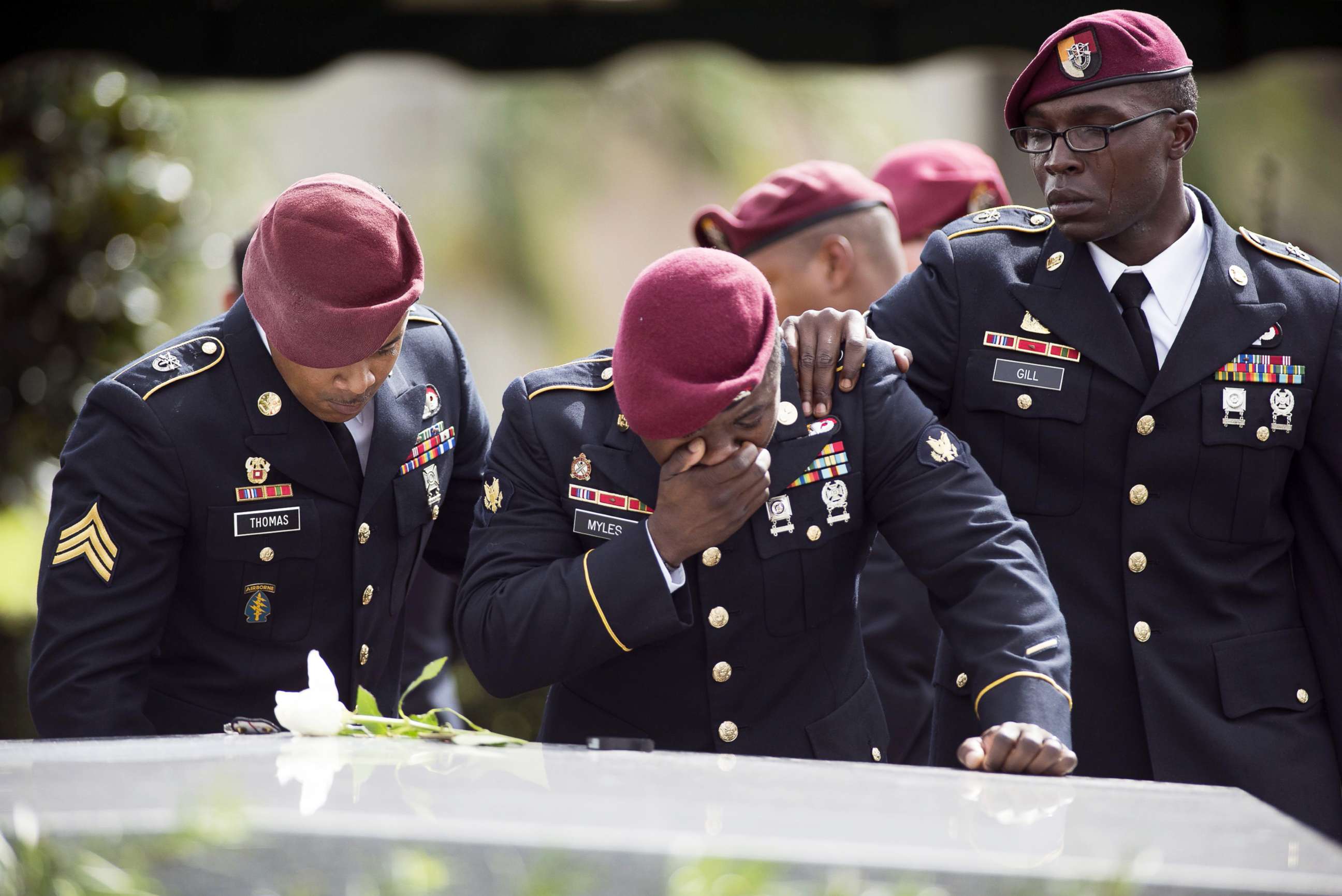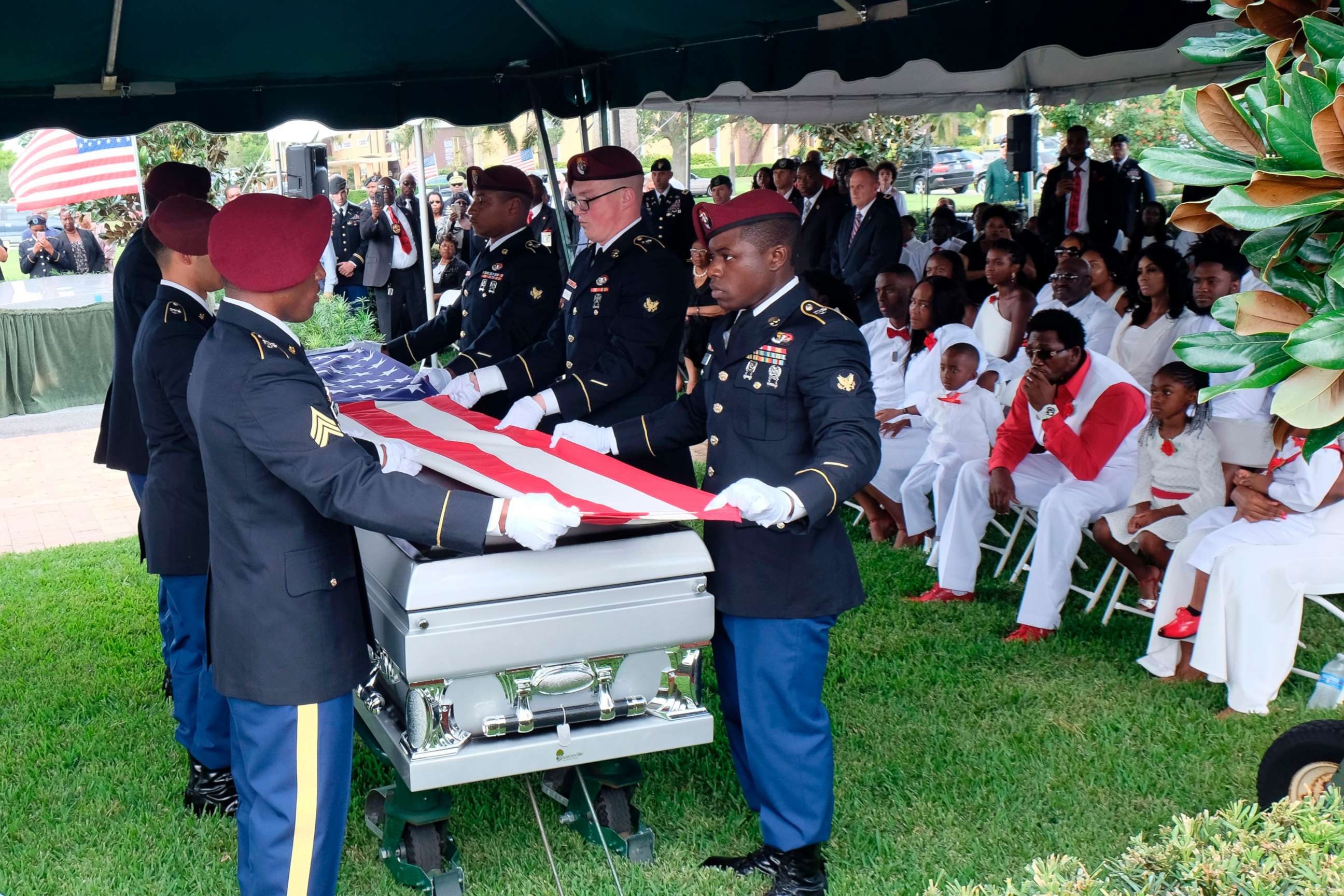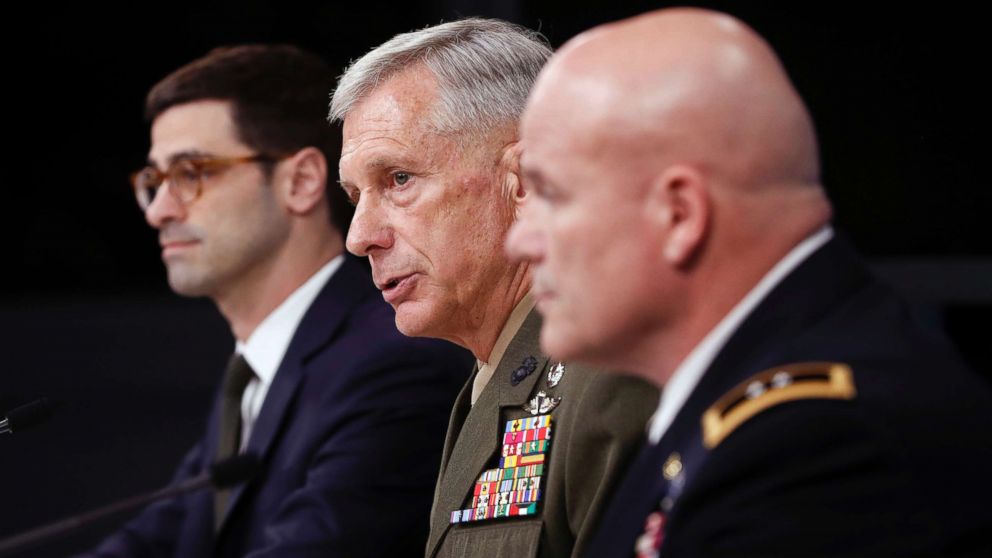Multiple failures led to ambush of American soldiers in Niger: Military investigation
An exhaustive U.S. military investigation into the deaths of four American soldiers in a deadly ISIS ambush in Niger last October found that their mission had been approved without proper authorities and that their unit had not been fully trained for their mission.
In the wake of the report's findings made public Thursday, Defense Secretary James Mattis has ordered changes to address the shortfalls in training and authorities uncovered by the report. U.S. Africa Command has already put in place new training and equipment for U.S. troops serving in western Africa.
The months-long investigation presented the first complete narrative of the circumstances surrounding the deadly ambush in northern Niger on Oct. 4, which killed Staff Sgt. Bryan C. Black, Staff Sgt. Dustin M. Wright, Staff Sgt. Jeremiah W. Johnson and Sgt. La David Johnson.
They were part of a team of Green Berets accompanying a platoon of Nigerien soldiers that was ambushed as they left the village of Tongo Tongo close to the border with Mali.
“I take ownership for all the events connected to the ambush of 4 October,” said General Thomas Waldhauser, the commander of U.S. Africa Command at a Pentagon news conference. “Again, the responsibility is mine.”
Waldhauser said that as a result of the investigation, Africom has already made changes to make U.S troops in western Africa safer.
“We are now far more prudent in our missions,” said Waldhauser. “The missions we actually accompany on have to have some type of strategic value in terms of the enemy we're going against.
"'Do they have a strategic threat to the United States?'” he asked.

While the U.S. troops in western Africa may be conducting fewer missions as a result, they have also been “beefed up” with increased firepower and drone surveillance, the option to use armored vehicles and additional response teams.
Major Gen. Roger Cloutier, who headed Africom’s investigation, told reporters “there were a series of contributing factors to what occurred in Tongo Tongo.” But he also said none of those factors was the direct cause of the enemy attack.
“The direct cause of the enemy attack in Tongo Tongo is that the enemy achieved tactical surprise there, and our forces were outnumbered approximately three to one,” said Cloutier.
The force of nearly 120 ISIS fighters was the largest ever encountered by U.S. troops in Niger.
Among the contributing factors, investigators found that the 12 members of the team, which had arrived in Niger just weeks before, had never really trained as a full unit prior to their deployment.
Investigators concluded that there were also "contradictory and ambiguous" issues at various levels of command that "resulted in confusion regarding the proper approval" for the team's initial mission plan.
For example, the investigation found that on Oct. 3 the team, based in the town of Oualllam, had set out on a counter-terrorism operation targeting the top leader of ISIS in the Greater Sahara, which operates along Niger's border with Mali.
According to a summary of the Africa Command investigation, the commander of Team Ouallam and his company commander "inaccurately characterized the nature of the mission" in the mission plan presented to a higher ranking officer.
Cloutier attributed the mischaracterization to sloppy paperwork, cutting and pasting information from a previous mission plan, and “a lack of attention to detail.”
The company commander, also a captain, approved the mission plan "based upon an incorrect belief that he had the authority to do so."
But in fact, the counter-terrorism mission to kill or capture the ISIS leader should have been approved by a higher-ranking officer, such as a lieutenant colonel stationed in Chad.
Waldhauser also noted that Africa Command is re-emphasizing that the mission of U.S. troops in West Africa is to advise and assist local forces and not take the lead in a military operation by engaging in “direct combat.”
He said that was the point of “the by, with and through strategy” designed to advise local troops.
“Our authorities are there to keep us out of direct combat, so it's important that gets reemphasized,” Waldhauser added.
The investigation praised the heroism of the soldiers killed and wounded in the ambush, and Waldhauser predicted that “there will be awards for valor in this case.”
There could be disciplinary action as well, as investigators recommended that U.S. Special Operations Command review the actions of three individuals involved in the incident.
Defense Secretary Mattis agreed with the report's recommendations to establish "clear and unambiguous guidance for the planning and approval of military operations, conducting a holistic review of certain equipment requirements, ensuring appropriate turnover procedures within the theater, and certain acts with respect to coordinating support from partner nation forces."
Mattis also gave the Department of Defense, the Army and U.S. Special Operations Command 120 days “to address systemic issues brought to light by this investigation."
They include reviews of current training and policies for the training of partner forces as well as policies that could affect military units from not training together fully as a unit prior to a deployment.
How the Green Beret team from Oullam got to Tongo Tongo in the first place and was left so vulnerable to attack by a large ISIS force was a key focus of U.S. Africa Command’s investigation.
The joint U.S.-Nigerien team did not find the ISIS leader in the town of Tiloa and instead carried out a "key leader engagement with a partner force commander."
As the team left Tiloa, bound for their base in Ouallam, the Lt. Colonel in Chad ordered them to participate in a second kill-or-capture mission targeting the same ISIS leader at a location farther north.
Their new mission was to support a second special operations team that was to actually carry out the kill-or-capture mission. But bad weather forced the second team's helicopters to turn back.
According to the report's summary, the commander in Chad "ordered Team Ouallam to execute the mission. The mission was unsuccessful in capturing the target."
ABC News has previously reported that in this portion of the mission the Green Beret team carried out intelligence reconnaissance of an abandoned campsite, where it was believed the ISIS leader had recently visited.
With the completion of that mission, the joint U.S.-Nigerien patrol headed to their home base in Ouallam.
But because the Nigerian troops needed water, the joint patrol stopped in the village of Tongo Tongo.

After a stay in the village, which ABC News has previously reported lasted 90 minutes, the convoy of U.S. and Nigerien forces left Tongo Tongo at 11:40 a.m. The investigation found there was insufficient evidence to conclude that the villagers were complicit in the ambush.
The joint patrol was immediately attacked south of the village by a force of more than 120 ISIS fighters.
The investigation found that the convoy of five Nigerien vehicles and three American vehicles received small arms fire from a wooded area. At that point, the team commander radioed to his higher headquarters "troops in contact" -- a message that led to the deployment of additional ground forces and aircraft that did not arrive until hours later.
What followed was a nearly two-hour-long battle during which at various times the American team was separated. Their vehicles withdrew from several positions where they were taking "overwhelming" enemy fire.
Black, Johnson and Wright were killed close to the scene of the initial location as they withstood withering enemy fire.
Johnson was killed about a mile from that location after he heroically held off ISIS fighters as long as he could.
Search teams did not find his remains for two days following the battle because his last location was outside the original search area and an earlier errant report that he might have been held hostage in another village to the north.




